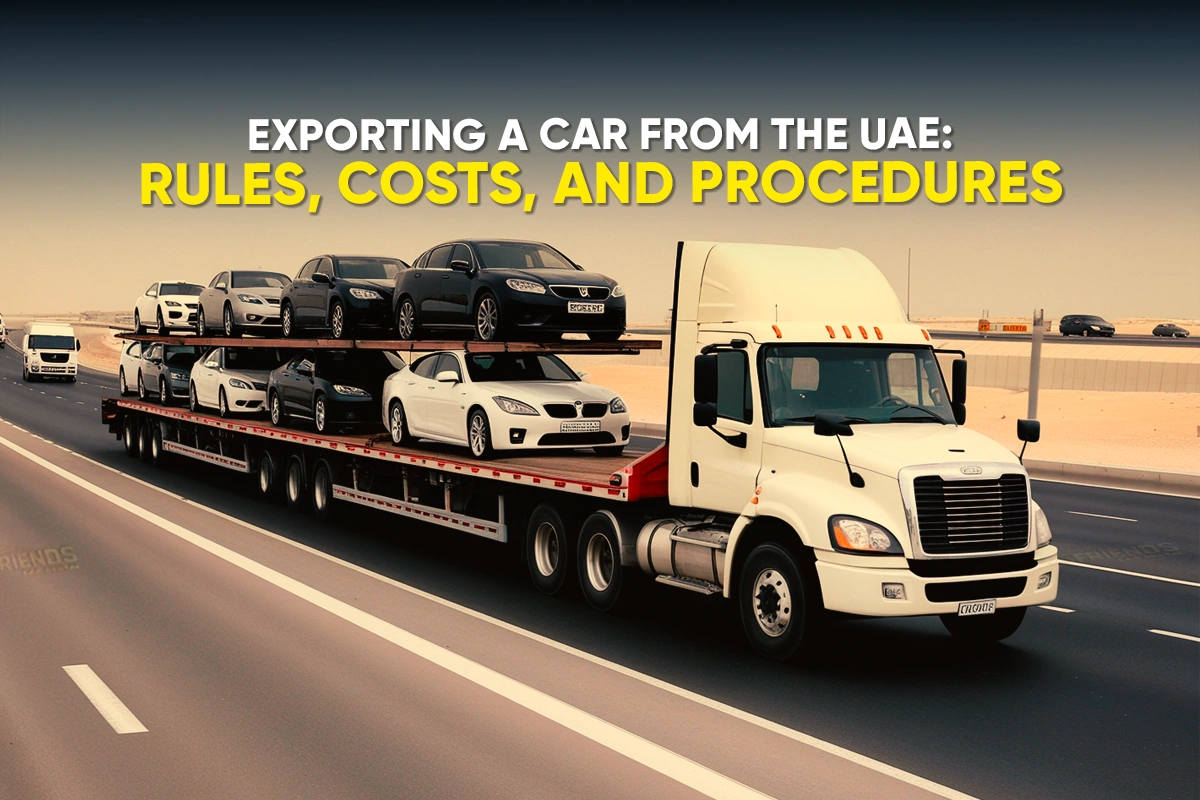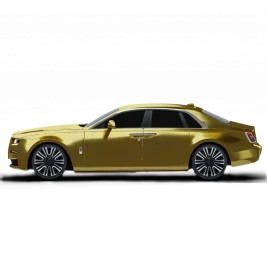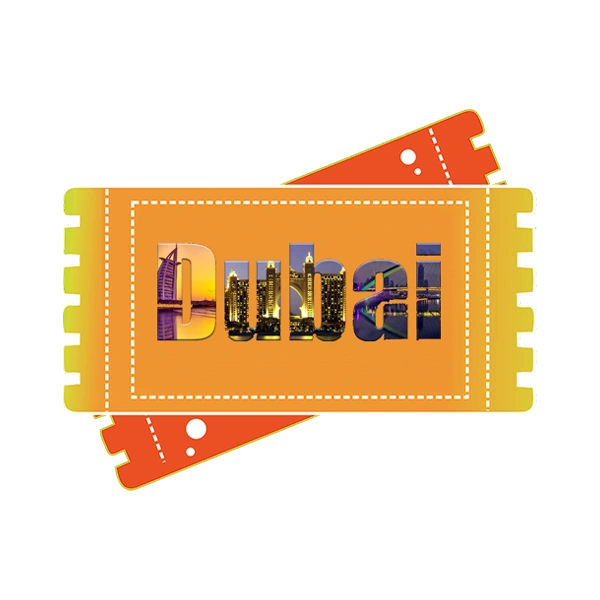What is The Procedure of Exporting a Car from the UAE

So, you're preparing to leave the Emirates and want to take your vehicle with you. The process of exporting a car from the UAE can seem complicated at first glance. However, it is highly standardized through the Dubai Road and Transport Authority (RTA) or the Ministry of Interior (MOI).
So, what factors come into play? This guide offers clarity, providing precise, step-by-step instructions, the mandatory RTA and MOI rules, and the exact costs required to de-register your vehicle and get it ready for international shipping or cross-border driving.
Forget the unnecessary jargon. Your checklist starts here.
The Essential Rule & Documentation
Before you visit any RTA- or MOI-approved licensing service provider (Tasjeel, Shamil, etc.), your documentation must be complete and your vehicle must be cleared of all liabilities. This is your mandatory checklist to ensure the MOI or RTA proceeds with the de-registration and issues the Export Certificate without delay.
Mandatory Documentation for De-Registration
You must present the following documents to the MOI/RTA/Tasjeel centre:
Original Emirates ID and Passport: Proof of identity and residency status.
Original Vehicle Registration Card (Mulkiya): The official document proving ownership.
Mortgage Clearance (eNOC) from the Bank: If the car was financed, a mandatory electronic No Objection Certificate (eNOC) must be requested from the financing bank to the MOI/RTA to confirm all liabilities are cleared. The MOI/RTA will not process the de-registration without this.
Vehicle Technical Inspection Certificate (if required): If your registration has expired, the vehicle may require a technical inspection before an Export Certificate is issued.
Documents for Shipping & Re-Registration
Once the MOI/RTA process is complete, you must prepare a separate documentation package for the shipping company, customs, and the registration authority in your new country. The document checklist includes:
Step-by-Step Procedure to Export Your Car From the UAE
The physical process of exporting your car begins and ends at an MOI/RTA-approved vehicle testing centre. The entire process takes approximately 15 to 30 minutes, provided all your documentation is in order.
Here’s the procedure breakdown:
Clear Financial Liabilities (Pre-Step): Ensure all outstanding fines (Salik, MOI/RTA, Police) are paid. If the vehicle was financed, secure the mandatory electronic No Objection Certificate (eNOC) from the bank.
Visit an MOI/RTA-Approved Centre: Drive your vehicle to the testing centre, such as Tasjeel or Shamil. They will require the car on-site.
Vehicle Inspection (If Required): If your vehicle's registration has expired, you must first pay for and pass an Export Technical Inspection. This is a quick check to ensure the vehicle is safe for transfer.
Surrender Original Plates and Documents: Submit your existing Dubai/UAE license plates and the original Mulkiya (Registration Card) with your Emirates ID/Passport.
Pay Fees and Obtain Certificate: Pay the required MOI/RTA fees for the service. Upon successful de-registration, the centre will issue your official Vehicle Export Certificate. This document is crucial for customs clearance and for registering the car in the destination country.
Receive Export Plates (If Driving): If you are driving the car to a destination in the GCC (e.g., Oman, Saudi Arabia), you must request temporary blue export plates. These plates typically come with a 7 to 14-day validity and require mandatory third-party export insurance to be purchased beforehand.
Handover to Shipper (If Shipping): If you are shipping the car (to a non-GCC country), you can skip the export plates. The car must be transported by recovery truck directly from the testing centre to the shipping agent or port, as it is no longer legally allowed on UAE roads.
Vehicle Export from the UAE Cost
The costs associated with exporting your vehicle fall into two main categories:
The mandatory MOI/RTA fees.
The variable shipping/transportation costs.
Mandatory MOI/RTA & De-Registration Fees (Dubai)
These are the official fees paid to the MOI/RTA to complete the legal export process:
Shipping Your Vehicle: Container vs. RoRo
Once the Export Certificate is issued, you must decide on the best way to transport your car. The choice depends on your budget, the value of your car, and the destination.
Roll-on/Roll-off (RoRo) Shipping
Process: The vehicle is driven directly onto a large vessel and secured in a designated deck area, similar to a multi-story parking garage.
Pros: It is generally the most cost-effective option for standard, operational vehicles. It has a quicker turnaround for loading and unloading
Cons: Vehicles are exposed to the elements and potential minor damage. You are not allowed to pack personal belongings inside the car
Best For: Standard sedans, SUVs, and fleet vehicles where cost is the primary concern.
Container Shipping
Process: Your vehicle is loaded and secured inside a sealed 20-foot or 40-foot container, which is then loaded onto the ship.
Pros: Provides maximum security and protection from weather and theft. You can ship personal belongings and spare parts along with the car inside the sealed container.
Cons: It is significantly more expensive than RoRo. Loading and unloading are more complex and can take longer.
Best For: Luxury, classic, non-running, or high-value vehicles that require maximum security.
Shipping Costs & Variability
The actual cost of shipping (separate from RTA.MOI fees) is highly variable based on the destination method (RoRo vs. Container) and the size of your vehicle. It often ranges from AED 2,500 to AED 10,000 or more.
Pro tip: Always secure a full, door-to-port quote from a reputable freight forwarder.
FAQ:
Can I export a car from the UAE if it has an outstanding loan?
No, you cannot export your car from the UAE if it has an outstanding loan. The car must be completely free of financial liabilities. You must first settle the loan in full and obtain a Mortgage Clearance Letter (eNOC) from the bank. RTA/MOI de-registration is not possible without this eNOC.
What is the difference between an Export Certificate and a Vehicle Clearance Certificate (VCC)?
The Difference: Export Certificate vs. Vehicle Clearance Certificate (VCC):
How long are the temporary blue export plates valid for?
The temporary blue export plates issued by the MOI/RTA are generally valid for a maximum of 14 days.
Do I need to pay customs duty when exporting a car from the UAE?
No, you do not pay an export duty to the UAE authorities. However, you will be required to pay import duties, taxes, and VAT upon the car's arrival in the destination country. It is calculated in accordance with that country's specific regulations.
What happens to my insurance once the car is deregistered?
Your standard UAE car insurance policy is cancelled upon de-registration. You can request an Insurance Refund Certificate from the MOI/RTA to claim a pro-rata refund on the unused portion of your policy.
Can a non-resident of the UAE export a car?
Yes, non-residents (such as those on a tourist visa) can purchase and export a vehicle, provided they have the necessary documentation (passport copy, VCC, and traffic file, if applicable) and comply with all MOI/RTA requirements.
Final Thoughts
Exporting your vehicle from the UAE is a process defined by two essentials: meticulous preparation and strict adherence to the RTA/MOI checklist. By prioritizing the settlement of all financial liabilities—most importantly securing the mandatory eNOC—you transform a complex procedure into a simple transaction. Use this guide as your operational blueprint to complete de-registration, secure your Export Certificate, and have your vehicle transported internationally without delay or unexpected fines.
Don’t forget to share your experiences in the comments below and write to us if this article was of any help to your cause.
Written by: FriendsCarRental
Published at: Sun, Oct 26, 2025 3:00 PM
Leave a Reply
Your email address will not be published. Required fields are marked *
Car Rental in Dubai
AED 2500
DAY
AED 0
MONTH
-
 SUV
SUV -
 4 Doors
4 Doors -
 5 Seats
5 Seats
- 1 Day Rental Available
- Deposit: Not Required
- Insurance Included
AED 1700
DAY
AED 36000
MONTH
-
 SUV
SUV -
 4 Doors
4 Doors -
 5 Seats
5 Seats
- 1 Day Rental Available
- Deposit: Not Required
- Insurance Included
AED 1200
DAY
AED 0
MONTH
-
 SUV
SUV -
 4 Doors
4 Doors -
 5 Seats
5 Seats
- 1 Day Rental Available
- Deposit: Not Required
- Insurance Included
AED 1600
DAY
AED 35000
MONTH
-
 SUV
SUV -
 4 Doors
4 Doors -
 5 Seats
5 Seats
- 1 Day Rental Available
- Deposit: Not Required
- Insurance Included
AED 1500
DAY
AED 28500
MONTH
-
 SUV
SUV -
 4 Doors
4 Doors -
 5 Seats
5 Seats
- 1 Day Rental Available
- Deposit: Not Required
- Insurance Included

 عربي
عربي
 English
English
 Français
Français
 Русский
Русский
 中国人
中国人
 Nederlands
Nederlands
 Española
Española
 Türkçe
Türkçe
 Italiana
Italiana














































